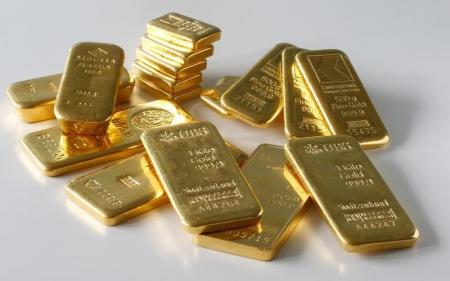Gold is marooned between U.S. rates and India demand – 21 March, 2017

It’s not unusual for a financial market to be pulled in different directions simultaneously by competing influences, but what is notable for gold currently is the apparent inability of the contradictory factors to gain momentum.
History and logic suggest that when the United States starts a monetary tightening cycle, gold will underperform, since as a non-yielding asset it loses out to instruments that will enjoy higher yields from the rising rates.
The Federal Reserve lifted interest rates on March 15 for the second time in three months, with expectations that it will raise at least twice more this year and perhaps three times in 2018.
But spot gold didn’t drop when the Fed pulled the rates lever, gaining 1.7 percent the day of the increase, and closing at $1,233.15 an ounce on Monday, up almost 3 percent since the day before the Fed move and 9.9 percent since the recent low in mid-December.
So, why is the gold market being sanguine about rising U.S. interest rates?
Part of the answer may be that investors are taking a view that the rise in real yields may not be as dramatic given U.S. inflation is also on an upward trend.
There also may be a U.S. dollar effect, with analysts at JP Morgan noting that it’s likely that the greenback has already seen the bulk of its rally in this tightening cycle.
“In the current cycle, the broad U.S. dollar has so far appreciated by 22 percent, and we see the dollar rallying another 2 percent higher into midyear before retracing to current levels by the first quarter of 2018,” JP Morgan said in a note published March 15.
“In short, the lion’s share of this cycle’s U.S. dollar appreciation could potentially be behind us,” the note said.
Rising U.S. inflation and a peak in U.S. dollar strength may mean that the traditional impact of a U.S. monetary tightening cycle may be less than usual.
What the gold market is currently signaling is that while U.S. interest rate rises are still a bit of a headwind, they may not be enough to offset some compelling tailwinds.
INDIA IS GOLD’S BEST HOPE
The main boost to gold prices in 2017 may well come from India, formerly the world’s top consumer of the precious metal.
Indian gold demand was pummeled in 2016, falling 21 percent to 675.5 tonnes from 857.2 tonnes the prior year, the biggest yearly decline in volume terms recorded by the World Gold Council.
One of the main factors driving the slump was the government’s ongoing efforts to attack the informal economy, culminating in the removal of high denomination 500 and 1,000 rupee notes in November, a demonetization that effectively removed some 86 percent of bank notes by value.
In an economy where most transactions are still cash, the impact was to crimp retail gold demand as liquidity dried up.
But there are positive signs that India is recovering, with imports jumping to 50 tonnes in February, up more than 82 percent from the same month in 2016, according to data provided by GFMS.
While some of this was likely due to what GFMS called the release of pent-up demand, it’s also possible that stronger economic conditions will lift Indian demand for jewelry, the main driver of that market.
While India is looking more positive for gold, it’s worth noting that China, the world’s largest buyer, is less constructive, with soft jewelry demand and the lack of a clear price trend deterring investment appetite.
It’s likely that the best-case scenario for China this year is one of steady demand, with the main X-factor being the value of the yuan, as a depreciating local currency may spur Chinese investor appetite for gold as a hedge.
Another potential positive for gold is the usual suspect of geopolitical risk, although if elections in France and Germany follow the recent Dutch vote, where anti-European populists did less well than expected, it may not add much to gold demand from a risk perspective.
Overall, it appears there is no clear price trend for gold, and looking at a cross-section of forecasts from analysts shows hat those who are bearish are only mildly so, while those bullish are also expecting modest gains at best.
While the ebb and flow of news events will drive daily price movements in gold, it would appear that a driver to move the price away from the $1,100 to $1,300 an ounce range is lacking.
Source: Reuters
